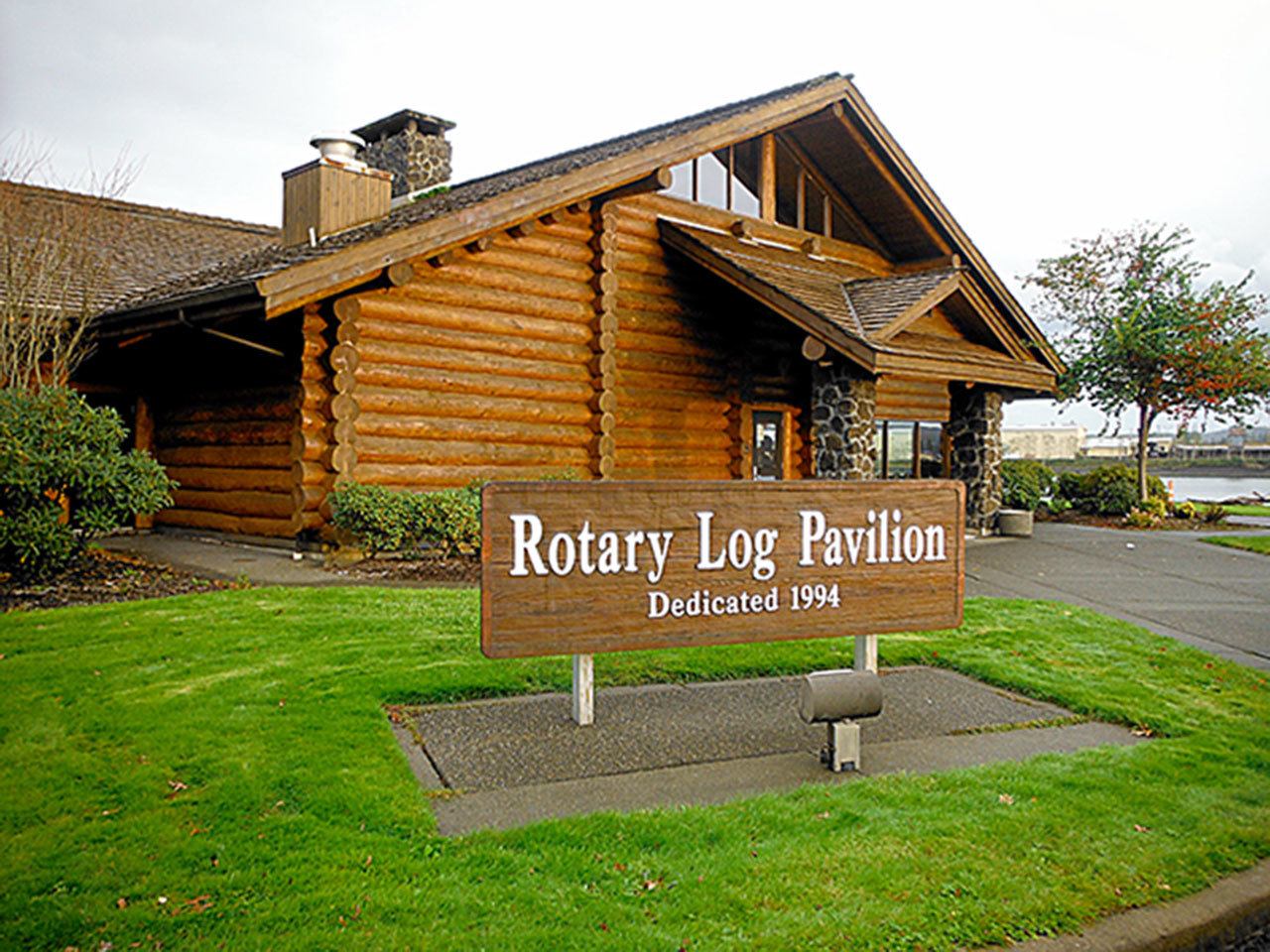Key players in the TimberWorks Resiliency &Restoration Master Plan, designed to address ongoing flooding issues in Aberdeen and Hoquiam, mingled with area citizens to discuss strategies, define priorities and address landowner concerns at an open house held Tuesday evening at the Rotary Log Pavilion in Aberdeen.
Aberdeen Public Works Director Rick Sangder led the event by detailing the project’s progress so far. He said information gathered from community members during a March walking tour of Fry Creek “led to great conversations about creating a place for flood storage while making it better for walking and biking.” In an April forum, community members were asked to place dots on a map showing where they were aware of ongoing flood problems, helping planners better focus their efforts.
Sangder described TimberWorks’ strategy as “multi-faceted,” taking into consideration not just flood control but also wildlife, the concerns of property owners, community needs and aesthetics when developing an overall strategy.
The majority of the flooding that affects residents of the Aberdeen/Hoquiam area is caused by heavy rainfall that overwhelms the existing drainage system, said Sangder. When this is coupled with high tide events, residents can see flooding like that in 2015, and more frequent smaller flood events.
TimberWorks’ plan will work in concert with the proposed North Shore Levee. “The levee will take care of the coastal flooding, and TimberWorks will handle rain flooding,” said Sangder.
There are three things that can be done to alleviate flooding citywide, said Sangder. First is a maintenance program to make sure existing drainage systems are functioning at maximum capacity. Second is a rainwater recapture and redistribution system, where small projects, sometimes at schools or even private residences, collect rainwater to keep it from entering the floodplain. That water can then be used for other purposes. “Seattle has a program with about 100 participants, and they are storing 16 million gallons a year,” said Sangder. Working together with these projects will be those creating new larger water storage areas (like one proposed by Olympic Stadium) and manipulating creek beds in an environmentally friendly and aesthetically pleasing way to keep rainwater from jumping their banks.
The third component is a tree planting program. Sangder says trees are great natural collectors of water, and the more trees there are the lower the flood risk. For instance, flood events can be reduced by replacing the shoulder area of a street with a concave grass strip lined with trees to keep more water out of the drain field.
The more than 30 people in attendance were asked to split up in groups based on their proximity to the six zones created by the plan. Each was given a budget and a list of problem areas and asked to prioritize each one. At the end of the discussion, the North Shore Levee and Fry Creek were the two main areas of concern, and a number of people spoke about the need for such projects to proceed as soon as possible.
“We are not looking at making this a five-year project,” said Hoquiam City Administrator Brian Shay, adding “there will be some tough decisions to make, but we have got to make them.”
TimberWorks’ plan looks to combat flooding with “multiple projects that can be done all at once if funds are available, or by optimizing priorities and done one at a time when funding is available,” said Sangder. As for paying for the project, Sangder says there are grants available, and TimberWorks’ approach to balancing flood control and the environment is making grant providers “more willing to help with funding.”
This was the final public hearing scheduled for this phase of the project. Soon the the plan’s drafters will hold an advisory group meeting to discuss priorities and implementation, then produce their draft master plan detailing their implementation strategy.
You can see more details of TimberWorks’ plan at www.ezview.wa.gov/timberworks, clicking on the “Library” tab and downloading the presentation from the Oct. 25 meeting.


